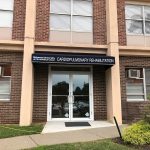Pediatrics
Pediatric Residency
Welcome to the Department of Pediatric at Richmond University Medical Center. The department has made a commitment to embracing and teaching all of the six core competencies of the American College of Graduate Medical Education (ACGME). We strive to incorporate an academic approach to our pediatric residency program. Our residents are trained to provide family-centered care that is evidence-based and compassionate. As a smaller-sized community program we are able to provide individual attention to all of our residents, which may be in the form of personal support, career guidance, mentoring a research project, or simply navigating through one of the most educationally stimulating periods of their lives.
Philosophy
The Pediatric Residency Program at Richmond University Medical Center is affiliated with SUNY Downstate. Our program is an ACGME fully accredited three-year training program designed to prepare residents to be excellent pediatricians who can provide care for children from all walks of life.
Our pediatric residents are an essential and integral part of the Department of Pediatrics. We train our graduates to be skilled clinicians with a strong knowledge base, who are able to diagnose and treat patients effectively. Most teaching is provided in small groups, supplemented by case-oriented discussions, didactic lectures and individual reading. Residents are given progressive autonomy under the supervision of the faculty.
All requirements of the Residency Review Committee for training in pediatrics are fulfilled, and all graduates are eligible to sit for the American Board of Pediatrics certifying examination.
Facilities
The clinical training revolves around the inpatient ward of a community hospital, a continuity clinic that services the entire north shore of Staten Island, and a busy emergency room where we see over 70,000 visits per year, of which about one-third are children. In addition, there is a Level III NICU that is part of the regional Perinatal Center and affords the opportunity to care for a wide range of neonatal problems.
Facilities Include:
- 25-bed inpatient ward
- Newborn nursery with more than 3,000 deliveries per year
- 3 resident call rooms
- 3-bed PICU
- 26-bed NICU, which is recognized for having the lowest mortality rate in the NY metropolitan area.
Resident Curriculum
Richmond University Medical Center’s Pediatric Residency Program is designed to provide its residents a comprehensive educational experience with increasing responsibility for patient care and supervisory experience over a three-year period. The ultimate goal is to prepare the resident to be an excellent provider of comprehensive general pediatric care. Specifically, by the completion of their residency, all pediatric residents will have fully demonstrated sufficient competence to enter practice without direct supervision. Written goals and objectives have been established for each educational experience, with specific objectives for each level of training in general pediatrics as follows:
PL-1 Level
During the first year of training, residents will be introduced to the basic experiences upon which the remainder of their training will rest. They will learn to perform age-appropriate histories and physical examinations competently. They will learn to prepare thoughtful assessments and treatment plans. With appropriate supervision, they will learn to perform procedures indicated for their patients for whom they have primary responsibility. The PL-1 residents will be taught to develop a serious sense of personal responsibility for their patients, and will be held accountable to this by their senior residents and faculty preceptors. They will learn to assess the level of severity of illness in a timely manner, and they will be shown when and how to seek necessary help from their seniors, and from professionals in other disciplines. As they progress through the first year, residents will expand their pediatric knowledge base. They will be stimulated to expand their scientific inquiry through dialogue in a variety of teaching settings, as well as through case-based literature searches with careful and critical literature review. They will develop a framework of understanding of pediatric practice that allows them to incorporate issues of child health advocacy, preventive health care and ethical dilemmas.
PL-2 Level
The second year of pediatric training will build upon the skill and knowledge base established in the first year. PL-2 residents will be expected to care for patients with greater complexity of illness in a self-directed way, still under the supervision of senior residents and attending faculty. They will expand and build upon their practice experience, demonstrating greater efficiency and capability in the management of patients with problems of greater complexity. Particularly in the primary care outpatient setting, they will demonstrate increasing ability to practice independently, and will extend their supervisory role in this area as well. Their clinical assessment and treatment skills will be refined to permit them to efficiently oversee care provided by PL-1 residents and students. Second-year resident will also begin to focus on their own career planning, drawing upon their increasingly rich pediatric experience, and from their discussions with advisers and mentors. They will enroll in the necessary activities to confirm or develop their future interests.
PL-3 Level
The third-year residents will continue to expand their clinical knowledge base as they prepare to take the certifying examination of the American Board of Pediatrics. They will develop effective skills and habits for lifelong learning. They will further enhance their knowledge base through additional subspecialty and pediatric generalist rotations. They will continue to develop their competence in procedural skills, critical care transport, office preparedness and telephone triaging abilities. They will be able to practice efficiently and effectively, with a significant degree of independence, particularly in their continuity and ambulatory practice activities. They will demonstrate leadership, confidence and supervisory capability in the inpatient, intensive care and emergency settings as well. PL-3 residents will refine their supervisory and teaching skills. They will lead journal club. They will develop focused sign-out skills, enhance their ability to promote continuity of care, and use these skills in the practice setting. They will bring appropriate closure to their continuing care experience, and finish planning the next step in their careers. They will make a lifelong commitment to be promoters of preventive health care, child health advocacy, and ethical and cost-effective practice of pediatrics.
Residency RotationsPGY1PGY2PGY3
Inpatient (Days & Nights)4 MonthsInpatient (Days & Nights)3 MonthsInpatient (Days & Nights)3 MonthsDevelopmental1 MonthNICU1 MonthNICU1 MonthNewborn1 MonthPICU1 MonthPICU1 MonthCommunity1 MonthSubspecialty3 MonthsSubspecialty4 MonthsAdolescent1 MonthOutpatient Clinic3 MonthsOutpatient Clinic2 MonthsOutpatient Clinic2 MonthsER1 MonthER2 MonthsER1 MonthVacation1 MonthVacation1 MonthVacation1 MonthThis table shows a general layout of which rotations can be expected per year. Schedules may vary amongst residents and also vary from year to year according to how subspecialty rotations are distributed throughout the 3 years of training.Residency Criteria
The criteria for candidacy in our residency program is as follows:
- U.S. Citizenship or Green Card- We are unable to sponsor Visa’s at this time.
- USMLE scores Step I 220 or above Step II 230 or above; CS Pass – first pass best consideration.
- COMLEX SCORES ACCEPTED 600 and above
- The number of attempts at passing score is taken into consideration.
- STEP 3 PASS ++++
- ECFMG verified
- There is a 5-year cut-off from date of graduation to the start of residency, and how your time is spent after graduation will be taken into consideration.
- No US Clinical experience required
- All applications will only be accepted through ERAS.
- Applications will be accepted from September thru the deadline of 12/31/16.
- Interviews will be scheduled from October through February.
- Six positions available for each PGY year.
There is also a requirement that a resident accepted into our program MUST pass their Step 3 by November 15 of their PGY 2 year or their contract will not be renewed. Also note that if you are accepted into our residency program, the pre-employment screening will include drug testing.
You are also strongly encouraged to apply for your NPI number NOW as you will need it for any residency program you are accepted into.
Contact Information:
Jiliu Xu, MD: Program Director
Email: [email protected]
Dori Harasek: Residency Coordinator
Email: [email protected]
Phone: 718-818-4636
Salary & Benefits
Educational Benefits:
- Membership in the American Academy of Pediatrics (AAP)
- $400 per year for books, journals or electronic equipment
- $1,700 for out of state board review course for PGY 3’s only. This course must be taken within three months of graduation to be eligible.
- Harriet Lane Handbook
- Pediatric Advanced Life Support (PALS) training
- Neonatal Resuscitation Program (NRP) training
- On-campus library
Salaries:
- PGY-1 $59,540.96
- PGY-2 $64,594.19
- PGY-3 $69,856.52
Others:
- 4 weeks of paid vacation per year
- Monthly tax-free food allowance for cafeteria
- $100 reimbursement for lab coats and scrubs
- 5 free interview days during year three
- Private call rooms with Internet and bathroom facilities
- Free parking
- Inexpensive living quarters for house staff are located on campus (based on availability)
- Full medical coverage and life/long-term care insurance



